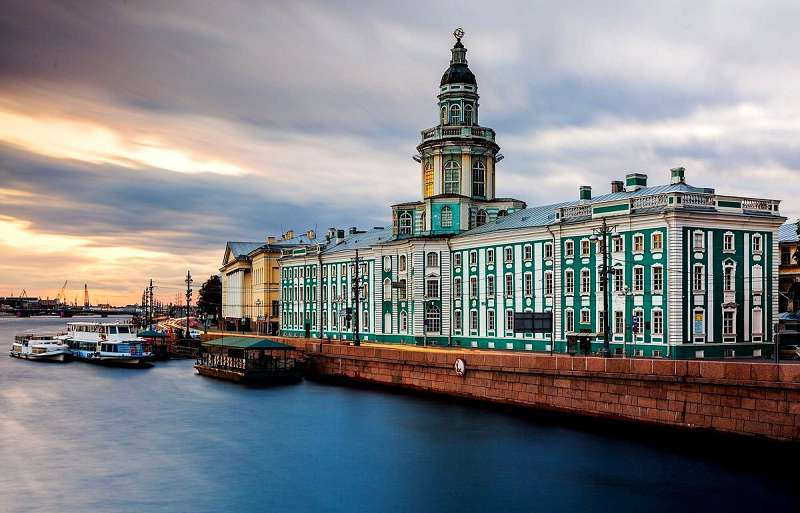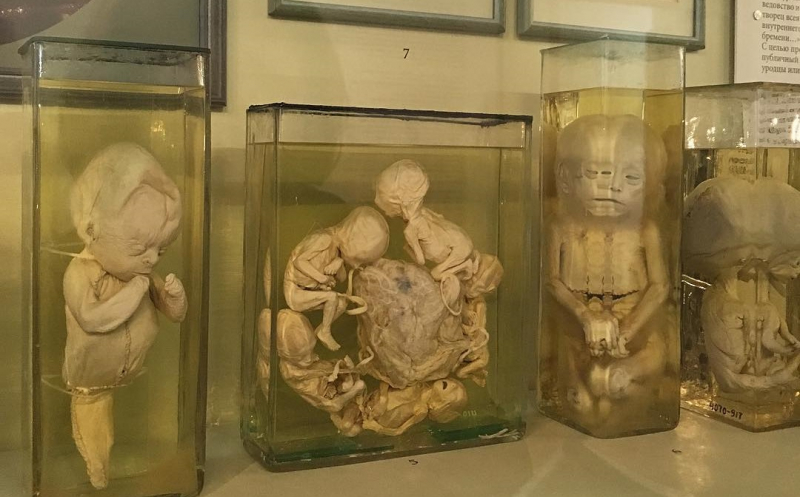An Overview of the Most Interesting Museums in St. Petersburg
When hearing the word "St. Petersburg" a lot of associations come to mind. Firstly, it is one of the most beautiful cities in Russia. Secondly, it is a historically and culturally significant place. A lot of museums, galleries, remarkable landscapes, rare collections and other tourist attractions famed all over the world are located there. It is common knowledge that, for many visitors, it can be a real problem to decide what places to visit, because everything seems interesting and obligatory for seeing.

One of the most popular places among tourists is the Kunstkamera, which is also known as the Museum of Ethnology and Anthropology. It is considered to be the weirdest place in the city, though, initially, it was founded by Peter the First in 1714 for scientific and religious purposes. He wanted to demonstrate to people that deformed human and animal fetuses were not the result of the evil eye or sorcery, but rather accidents of nature which are to be studied.

It is famous largely for Peter’s collection of monstrosities, preserved "freaks', two-headed mutant fetuses, deformed animals and odd body parts.
But it also houses a collection of minerals and on the third floor one can even find a recreation of Mikhail Lomonosov’s laboratory.

It is impossible to pass by the Winter Palace, also known as the Hermitage. Over 3 million works of art are kept here, starting from the classical period to modern art. It is practically impossible to examine carefully all the pieces of art located in Hermitage because it would take more than seven years. The Hermitage was created by Catherine the Great in 1764. She ordered her ambassadors to purchase the best pieces of art all over the world. Now it is the second largest museum in the world. Such famous paintings as "The Return of the Prodigal Son" by Rembrandt, "The Madonna Litta" painted by the pupil of Leonardo da Vinci, "Conestabile Madonna" by Raphael and many other masterpieces can be found there.

As the largest private museum of contemporary art, Erarta is a part of modern Russian culture. Pictures, installations, different objects, sculptures are appearing there all the time. It can also be called an innovative museum because a lot of creative projects find their second life at Erarta.

Cruiser Aurora is not a typical museum. It is a legendary Russian ship and a symbol of the revolution. Also, it is one of the oldest surviving ships of the Russian Navy. Visitors can see six rooms containing more than 300 unique objects such as maps, old documents, photographs, paintings and other things.

Another place that is worth seeing is the Pushkin Apartment Museum. There is hardly even one person who has never heard about this famous Russian poet. If one wants to feel the atmosphere of the 19th century and see the place where Pushkin spent the last 4 months of his life, they should come here. In 1836 he rented a flat in Volkonsky’s house on the ground floor.
The house has been reconstructed to look exactly as it did in the poet’s last days. Now there is also an exhibition dedicated to the poet’s life and history of this house.
The private Museum of Russian Vodka is the place attracting a lot of foreign visitors. It is not big, but there are a lot of unusual bottles and waxwork models. Informational displays explain the creation of vodka and history as well as its importance to the Russian identity. It is even possible to try this drink.

The Faberge Museum is one of the most luxurious and prestigious places in the city. It holds the largest collection of Faberge eggs, the majority of which belonged to Russian royal family. There are a lot of other jewelry pieces made by the Faberge company. At the museum, one can hear a very interesting story about these imperial eggs, which are unbelievably expensive.

The State Russian Museum is the main pride of Russia. It was initiated by Alexander the Third and later Emperor Nicholas the Second continued its development. It is the largest museum of Russian art containing more than 400,000 exhibits reflecting the trends and periods in the history of Russian art. Also it is the largest educational, restoration and research center in Russia.
Such famous masterpieces as "The Ninth Wave" by Aivazovsky, "The Last Day of Pompeii" by Karl Bryullov, "Reply of the Zaporozhian Cossacks" and "Burlaki, or Barge Haulers on the Volga" by Ilya Repin, "The Knight at The Crossroads" by Viktor Vasnetsov and many other famous paintings and exhibits can be seen there.

The Museum of Perfume is another interesting place. Here one can not only see exhibits but smell the fragrances as well. An experienced guide will tell you about the perfume of the 19th and 20th centuries and show the best flavors of modern perfumers. Antique self-made bottles and books with secrets of making fragrances make the atmosphere magical.
